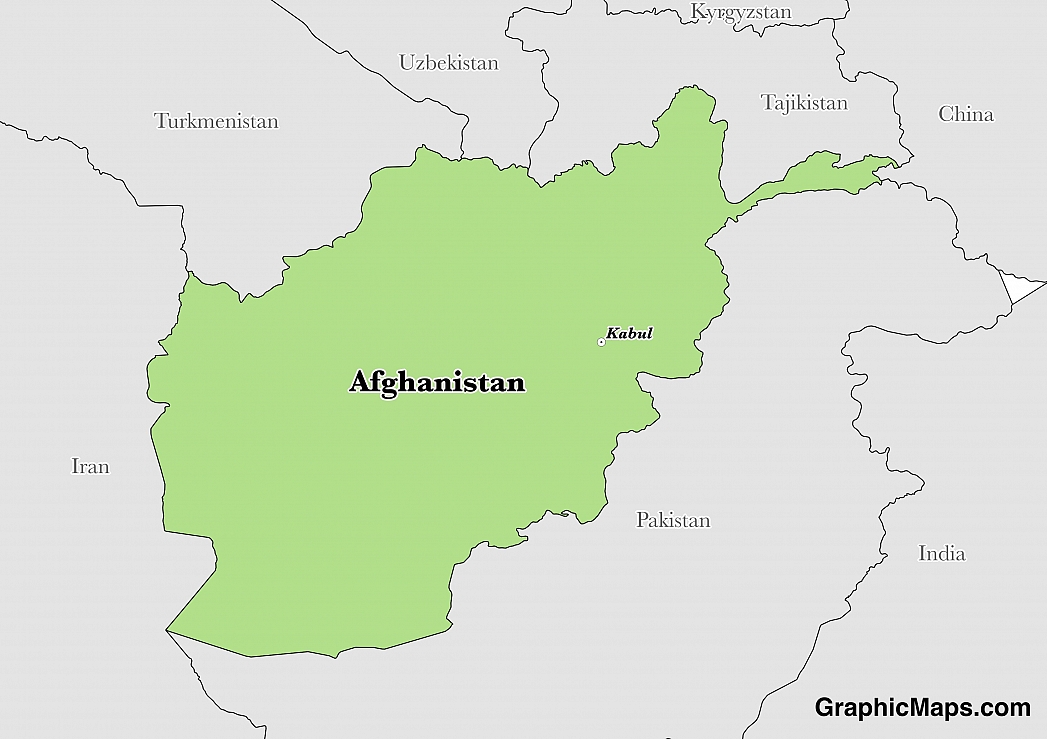Where is Afghanistan?
Located in southern Asia, north and west of Pakistan and east of Iran, Afghanistan has a 5,987.00 km border with China (91 km), Iran (921 km), Pakistan (2,670 km), Tajikistan (1,357 km), Turkmenistan (804 km) and Uzbekistan (144 km).
Kabul is an old city dating back over 3,000 years. Timur Shah Durrani made it the capital during his 1772 to 1793 reign. This city’s eight neighborhoods lie highly elevated between River Kabul and the Hindu Kush mountains. Despite the years of wars and insecurity, Kabul is one of the fastest growing cities with over 3 million residents as of 2015 statistics. This city has seen the number of foreign tourists increase in the recent past, most of whom enjoy the historical buildings, ruins, and museums among other attractions. Unlike most parts of its surrounding, Kabul experiences a cold semi-arid climate with a comfortable temperature all year round apart from the winter months that receive high precipitation, including snow.
Read more on Afghanistan's CapitalAfghanistan is an Asian country covering 652,230.00 km2. This makes it the 40th largest country in the world and almost six times the size of Virginia; slightly smaller than Texas. Its geographic coordinates are 33 00 N, 65 00 E and Kabul is the capital city.
The name "Afghan" comes from the word originally used to describe the Pashtun people; "stan" is a term meaning "place of" or "country of".
Its ISO code is AF.
Geography
Afghanistan has a mean elevation of 1,884 m above sea level.
It experiences a climate that is arid to semiarid, with cold winters and hot summers. It has a mostly rugged and mountaineous terrain, with plants in the north and southwest.
Population
Afghanistan has a population of 33,332,025 making it the 40th largest in the world. In general, the eastern region of the country is more densely population than the other regions, with the south being the most sparsely populated.
Dari and Pashto are both official languages. Major ethinc groups are Pashtuns, Tajiks, Hazarsa, and Uzbeks. The population is predominantly Muslim.
The Afghanistan constitution recognizes Pashto and Dari as the official languages. Both of these are Iranian sub-family languages of Persian origin. Dari alphabet has 26 letters while Pashto has 45. Dari makes up the most speakers, especially in urban areas while Pashto is second with slightly lower speakers than Dari. Almost 80% and 68% of the population speak Dari and Pashto respectively.
Read more on Afghanistan's LanguagesThe dialing code for the country is 93.
Government
Afghanistan is an independent country. It gained independence from the United Kingdom in 1919. Its constitution was last ratified in 2004.
Since independence, Afghanistan has been either a democratic state or an Islamic state. Today, it is both. Currently, the elections are democratic in nature. The country has an executive president who is the head of state and commander-in-chief of the armed forces. The prime minister is the head of government. There are two vice presidents. Afghanistan has a bicameral system with the House of Elders being the upper house and the House of the People being the lower one. The president appoints the provincial governors and the judiciary. Currently, the president and member of the national assembly are all elected on a popular vote by registered voters who must be over eighteen years.
Read more on Afghanistan's GovernmentEconomy
Factoring in Purchasing Power Parity, Afghanistan's GDP is $64,080,000,000.00 (USD) with $2,000.00 (USD) per capita. This makes it the 103rd largest economy and its citizens the 196th richest in the world. The currency of Afghanistan is the Afghani (AFN).
Its major export partners are India, Pakistan, and Tajikistan. Its main exports are opium, fruits and nuts, and handwoven carpets. Its major import partners are Pakistan, India, and the United States. Its major imports include machinery and other capital foods, and food.
Flag
The Afghan flag has vertical bands of black, red, and green with an emblem that reflects the Islamic nature of the country. The colors represent the country's dark past, the fight for independence when people lost their lives and the hope for a better and prosperous future. Afghanistan holds the record for changing its flags’ colors, emblems, and sizes the most number of times. These changes occurred under different rules from the early ages to the Taliban rule and finally to the modern state.
Read more on Afghanistan's FlagThis page was last modified on January 17th, 2018
More on Graphicmaps

Published on 2019-11-06
What is a Trade Embargo?

Published on 2019-11-04
Which Two Countries Used to Have the Same Flag?

Published on 2019-09-16
What Is the Only Two-Sided State Flag?

Published on 2019-09-16
Which Country Flag Looks Like the Texas Flag?

Published on 2019-08-29
Flags That Resemble the US Flag

Published on 2019-08-20
